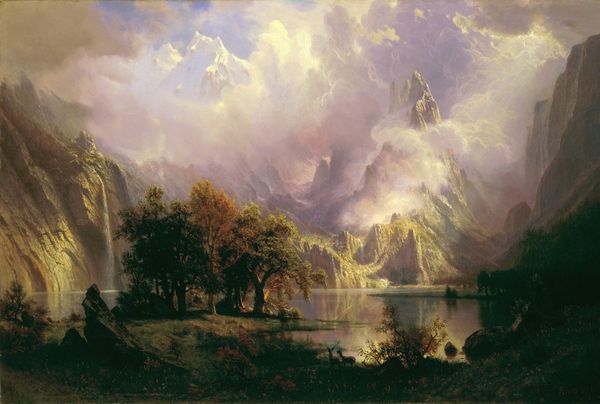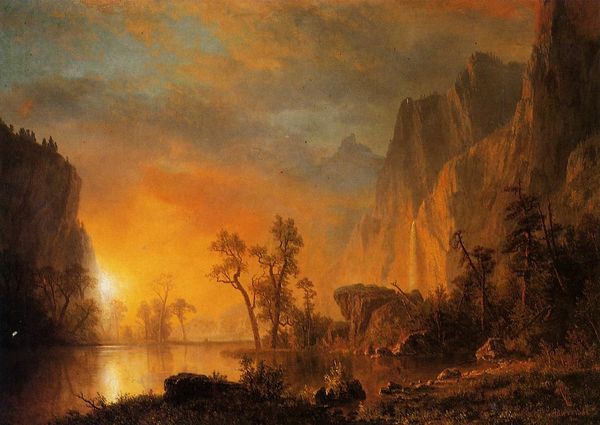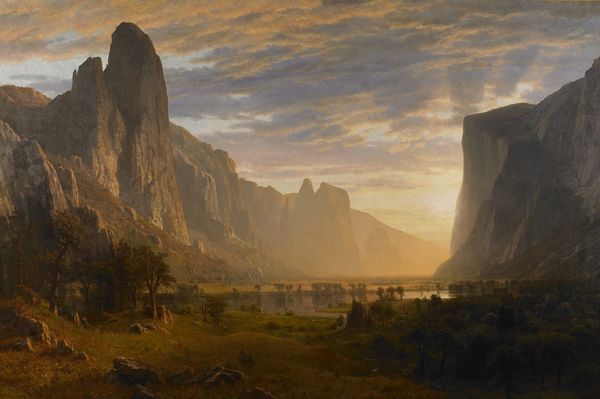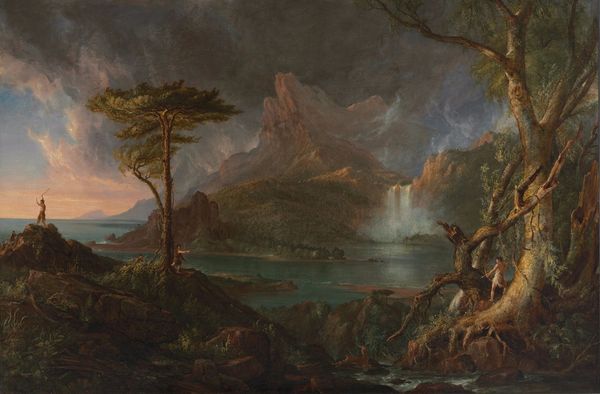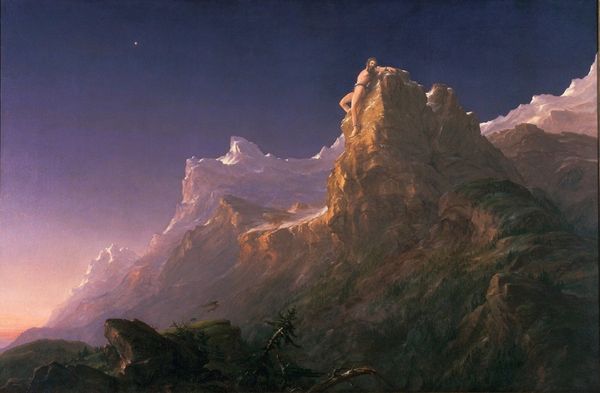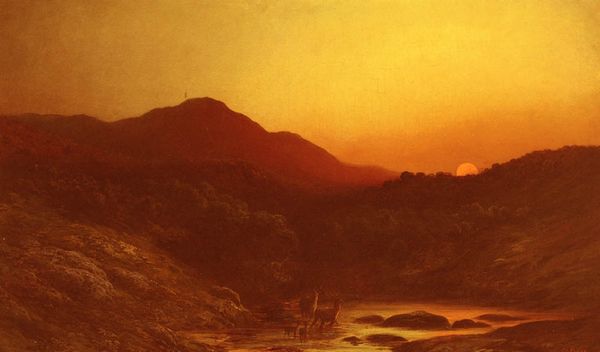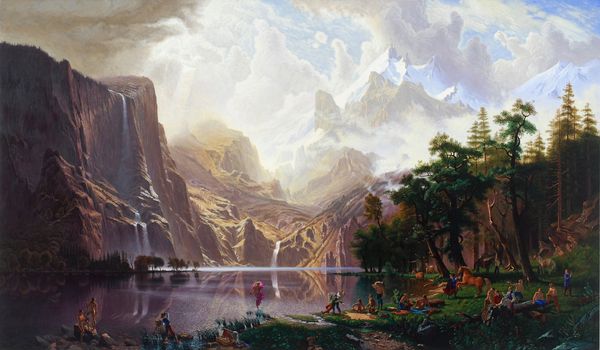
Copyright: Public domain
Editor: Frederic Edwin Church painted "Cotopaxi" in 1862 using oil paint. It’s… overwhelmingly orange! But not just orange – fiery. And that erupting volcano makes me uneasy. What do you see in this piece? Curator: I see a loaded landscape, literally. Church paints not just a volcano, but Cotopaxi, a symbol of power, of nature’s raw force. The sunset— or is it the glow of the eruption—bathes everything in a preternatural light. The composition directs our gaze. The waterfall leads our eyes to the placid lake, which then mirrors the volcano’s reflection. It's like a visual echo chamber of creation and destruction. Editor: An echo chamber… That's intense. Why Cotopaxi specifically? And what does it echo, culturally speaking? Curator: Church was part of the Hudson River School. For them, landscape wasn’t just scenery, it was imbued with spiritual and national significance. Cotopaxi, in Ecuador, represented the sublime – that awe-inspiring and terrifying power of nature that dwarfed humankind. Its eruption mirrors societal anxieties and possibly alludes to the unfolding turmoil of the American Civil War. Think of it as an operatic metaphor, rendered in oil. What feelings arise for you? Editor: Now that you point it out, the reflection adds to that… that feeling of everything possibly being on the verge of toppling. Even the beautiful waterfall seems almost insignificant in the shadow of the volcano. Curator: Exactly. The painting invites contemplation on the power of nature and also its potential to unleash, reshape, and overwhelm. Do you think the symbolism resonates even today? Editor: Definitely. Thinking about climate change, it hits differently. All that power, all that potential destruction… it’s pretty relevant. Thanks, that's a lot to take in! Curator: Indeed, a canvas like this asks more than it answers. Another layer revealed!



